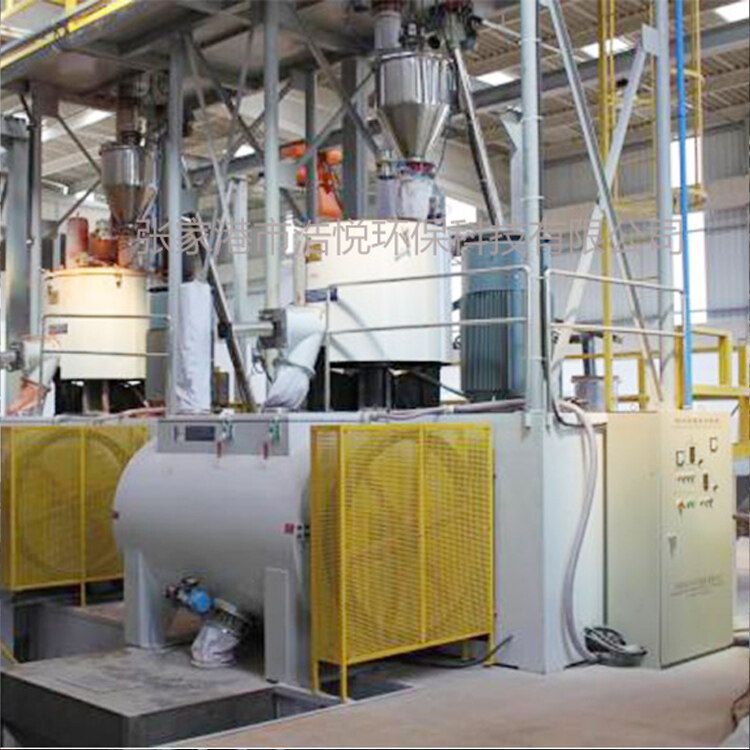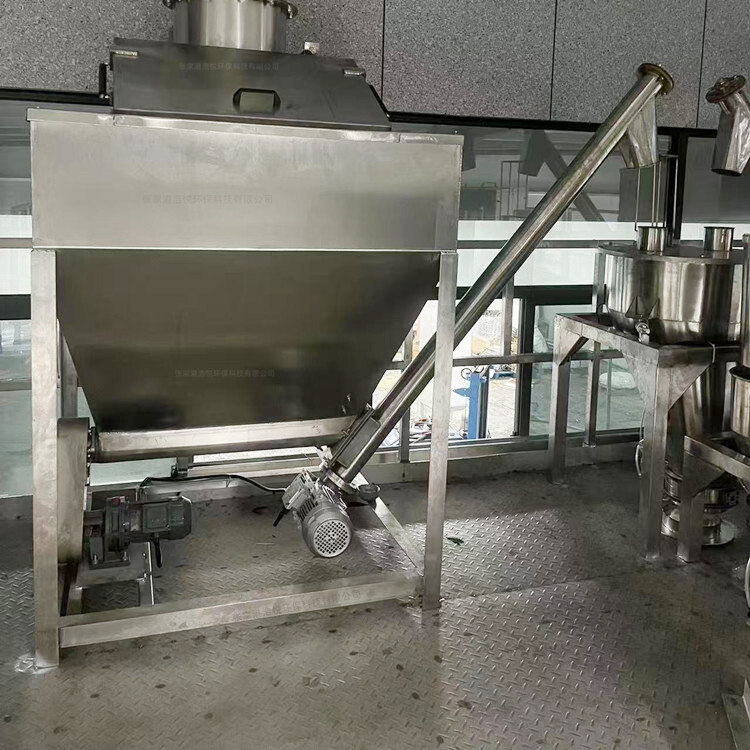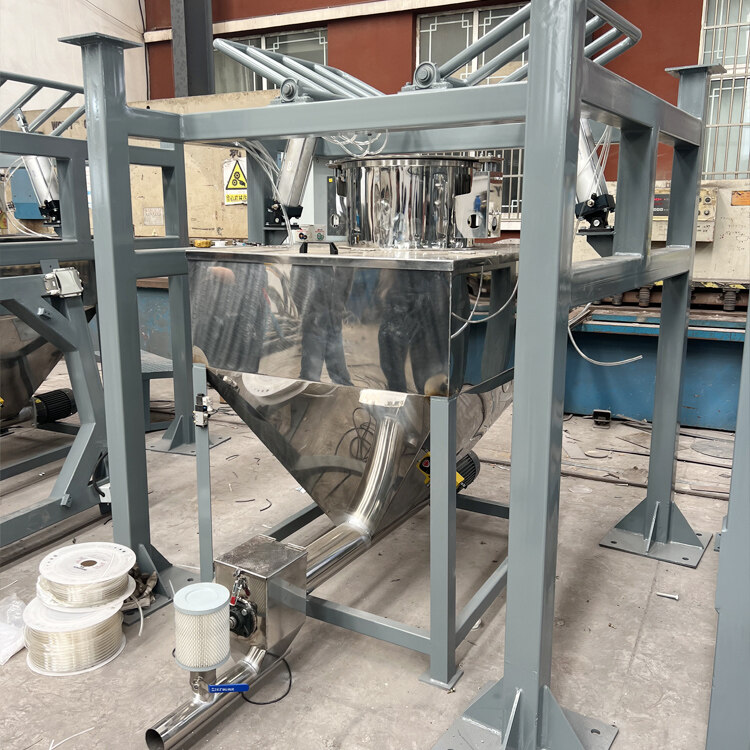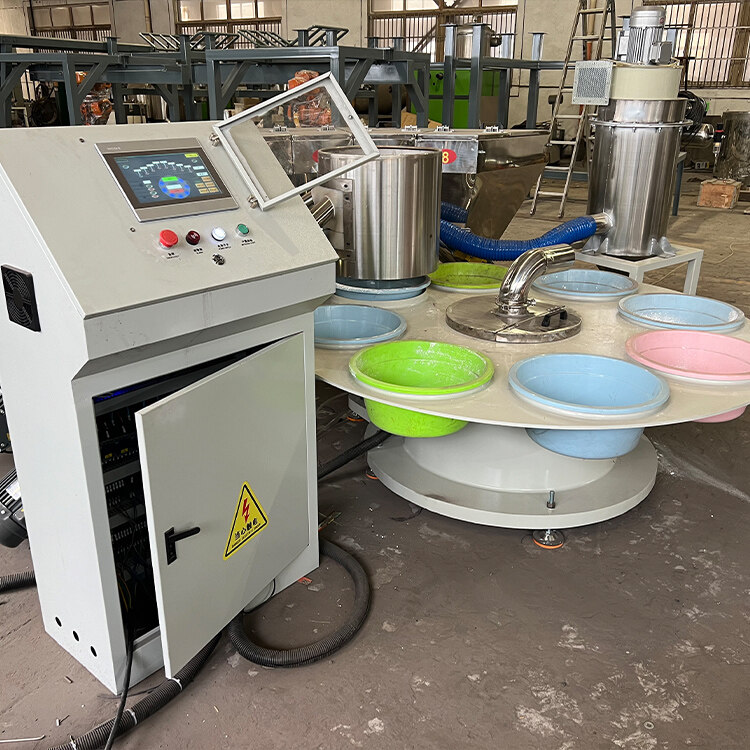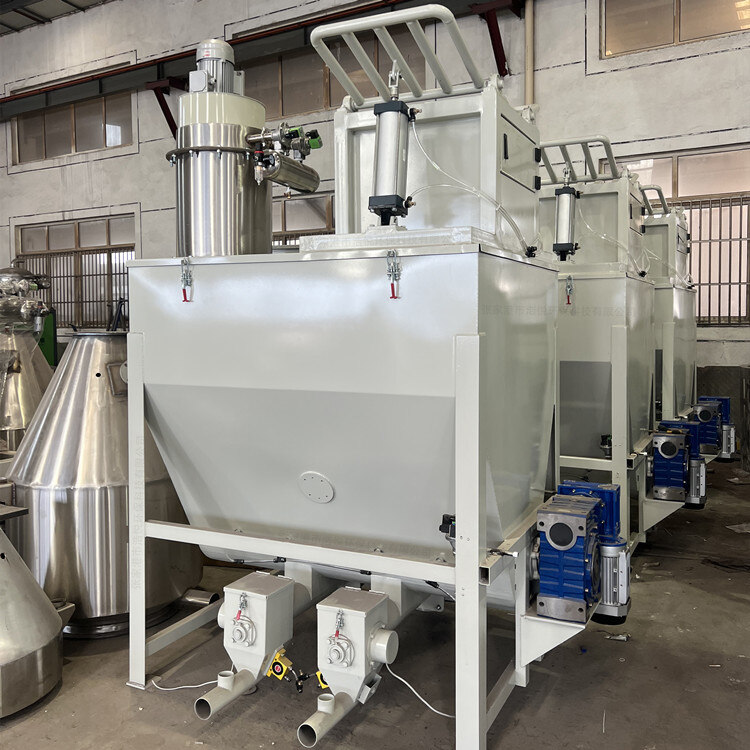- Introduction to automatic batching machine and fully automatic batching machine equipment
- The powder metering system tells you about the introduction of the mixing and drying machine
- 1000kg vacuum feeding machine
- Fully automatic small material batching system
- Research on Innovation of Automatic Weighing Machine Technology
- Design and operation of automatic batching system using PLC, industrial computer and frequency converter
Automatic metering and conveying equipment
- Category:Automatic metering and conveying equipment
- Hits:126次
- Release Date:2025-06-27
- Share:
- Inquiry
- Details
In the process of industrial production moving towards intelligence and refinement, automatic measuring and conveying equipment, with its high precision, high efficiency, and automation characteristics, has become a key equipment to ensure product quality and improve production efficiency. This type of equipment is widely used in multiple industries such as chemical, food, pharmaceutical, and building materials. By integrating the measurement and transportation functions of materials, it achieves precise control of the entire process from raw material input to finished product output.
1、 Basic principles of automatic measuring and conveying equipment
The working principle of automatic measuring and conveying equipment is based on accurate measurement of material physical quantities (such as mass, volume, flow rate, etc.), and combined with conveying technology to achieve stable material transportation. The core logic is to collect real-time measurement data of materials through sensors, transmit the data to the control system, analyze and calculate according to preset process parameters, and then control the execution mechanism to adjust the conveying speed, flow rate or weight of materials, ensuring that materials are accurately conveyed to the target position according to established requirements.
Taking quality measurement and transportation as an example, equipment usually uses weighing sensors to detect the weight of materials. When the material passes through the weighing platform, the elastic element inside the sensor deforms, causing the resistance value of the resistance strain gauge to change. It is converted into a voltage signal through a Wheatstone bridge, and then converted into a digital signal through an amplifier and A/D converter. Finally, the real-time weight of the material is calculated by the control system. At the same time, the control system achieves quantitative material transportation by adjusting the speed of the conveying motor and controlling the opening and closing of the valve according to the preset weight target.
2、 Core components of equipment
(1) Measurement unit
Weighing measuring device: It is the most common measuring method, suitable for various forms of materials such as granular, powdery, block, etc. High precision weighing sensors (with an accuracy of up to 0.01% FS) combined with weighing platforms can achieve static or dynamic weighing. For example, in the grain processing industry, static weighing measuring devices are used to measure batches of raw materials such as wheat and corn; In the transportation of chemical raw materials, dynamic weighing measuring devices can monitor the weight of materials in real time.
Volumetric measuring device: By rotating components such as rotors, screws, gears, etc., materials are measured and transported according to a fixed volume. This method has a simple structure and is easy to maintain. It is commonly used for filling liquid materials with good fluidity, such as edible oil and coatings, as well as conveying granular materials such as grains and fertilizers. However, the measurement accuracy is relatively low, generally within ± 1% - ± 2%.
Flow metering devices: including electromagnetic flow meters, turbine flow meters, mass flow meters, etc. Electromagnetic flowmeter is suitable for flow measurement of conductive liquids, with an accuracy of ± 0.5%; Turbine flow meters reflect flow rate through the rotational speed of turbine blades and are commonly used for measuring fluids such as oil and natural gas; The mass flow meter is based on the principle of Coriolis force and can directly measure the mass flow rate of materials, without being affected by factors such as temperature and pressure. Its accuracy is as high as ± 0.1%, and it is widely used in high-precision measurement applications.
(2) Conveyor unit
Belt Conveyor: Conveying materials through continuous operation of the belt, suitable for long-distance transportation of bulk bulk materials, such as ore transportation in mines, coal loading and unloading in ports, etc. Belt conveyors can be equipped with weighing rollers and speed sensors to achieve dynamic measurement of materials.
Spiral conveyor: using the rotation of spiral blades to push materials forward, suitable for closed conveying of powdery and granular materials, such as cement, flour, etc. Its advantages are small footprint, flexible conveying direction, and the ability to transport horizontally, obliquely, or vertically.
Pneumatic conveyor: It uses the power of airflow to transport materials and is divided into suction type and pressure type. The suction type generates negative pressure through a vacuum pump and sucks the material into the pipeline; The compression type uses compressed air to push the material into the pipeline. Pneumatic conveyors are suitable for powdery, granular, and small block materials, and have the characteristics of long conveying distance and no pollution. They are widely used in industries such as food and pharmaceuticals.
(3) Control system
The control system is the "brain" of automatic measuring and conveying equipment, usually composed of programmable logic controllers (PLC), industrial computers (IPC), human-machine interfaces (HMI), etc. PLC is responsible for collecting sensor data, executing control algorithms, and driving execution mechanisms; Industrial computers are used for complex data processing, recipe management, and system monitoring; HMI provides operators with an intuitive interface for parameter settings, operational status display, and fault alarms. In addition, the control system can also be connected to the factory's production management system (MES) through network interfaces to achieve real-time data transmission and sharing, facilitating production scheduling and quality traceability.
3、 Typical application scenarios
(1) Food industry
On the food processing production line, automatic measuring and conveying equipment is used for precise proportioning of raw materials and quantitative packaging of finished products. For example, in biscuit production, precise control of the input of raw materials such as flour, sugar, and oil is achieved through weighing measuring devices to ensure consistency in product taste and quality; In the beverage filling process, volumetric flow meters and gravity metering devices are used to achieve quantitative filling of beverages, ensuring that the capacity of each bottle of beverage meets the standards.
(2) Chemical industry
In the chemical production process, extremely high precision is required for the measurement and transportation of raw materials and finished products. Automatic measuring and conveying equipment can achieve precise measurement and safe transportation of various chemicals, such as in paint production, using mass flow meters to accurately control the ratio of resin, pigment and other raw materials; In pesticide production, closed pneumatic conveying equipment is used to transport toxic and harmful materials to prevent leakage and pollution.
(3) Building materials industry
At the concrete mixing plant, automatic measuring and conveying equipment accurately measures and transports raw materials such as sand, cement, and fly ash, ensuring accurate mix proportions of concrete and improving its strength and durability. In addition, in the production of dry mortar, automatic batching and mixing of various materials are achieved through screw conveyors and weighing measuring devices.
4、 Technological advantages and development trends
Automatic measuring and conveying equipment has significant technological advantages. The high-precision measurement function ensures the accuracy of material ratio and improves the stability of product quality; The automated conveying process reduces manual intervention, lowers labor intensity and labor costs; The fully enclosed conveying method effectively prevents material leakage and pollution, meeting environmental protection requirements.
In the future, automatic measuring and conveying equipment will develop towards intelligence, integration, energy conservation and environmental protection. In terms of intelligence, the equipment will integrate more sensors and intelligent algorithms to achieve fault prediction, automatic calibration, and adaptive control; In terms of integration, through modular design, functions such as metering, conveying, and mixing are integrated into one, improving the universality and flexibility of the equipment; In terms of energy conservation and environmental protection, new energy-saving materials and optimized system design are adopted to reduce energy consumption and operating costs, providing more efficient and green solutions for industrial production.


